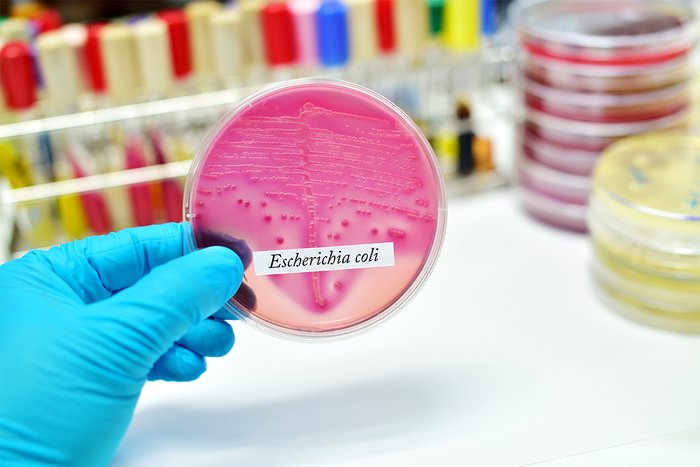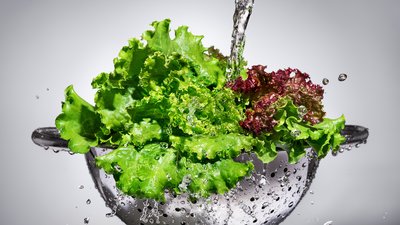The headlines are scary. In California, the first person just died from the latest round of tainted produce. This time, the culprit is E. coli bacteria on Romaine lettuce.
We've seen this before. Consumers in the United States and other countries periodically face food scares. In 2006, three people died and 199 were sickened from E. coli on bagged fresh spinach. In 2011, more than a dozen people died from eating listeriosis-tainted cantaloupe grown on a Colorado farm. Then there was the 2017 norovirus outbreak that sent the fast-food chain Chipotle's sales reeling.
According to the CDC, of the almost 10 million cases of food-borne illness reported in the United States every year. Of these, 51 percent are from contaminated plants and 23 percent from leafy greens alone.[1] Beef, game, pork, and poultry were responsible for 22 percent of the illnesses, and dairy for 17 percent.
Bacteria: The Good, The Bad, and the Ugly
Bacteria are as much a part of life on our planet as is oxygen. There are good bacteria, such as the bacteria that digests the food in our gut, and there are bad bacteria of the sort mentioned above. The goal doesn't need to be to eliminate bacteria—just to encourage the good stuff and keep the bad stuff in check.

In light of the recent E. coli threat, you might be tempted to rinse the hell out of your greens—and that can help. A recent Swedish study has found that, while washing off fresh greens can't eliminate all the bacteria, it can significantly reduce them.[2] The ultimate solution, they say, is for the producers and distributors of "green produce" to use industrial methods unavailable to home kitchens.
Food companies have tried irradiating produce, bombarding it with ultrasonic waves, and washing it in chlorine and other chemicals. These methods can reduce the bacteria count, but they are not very efficient. Nor have consumers embraced such methods. And, in many cases, even if the produce exits the processors squeaky clean, they usually accumulate bacteria by the time they get to the grocery shelf.
Five Steps to Safer Greens
Having said all that, the study did offer some ways to make your greens safer, if not completely safe.
1. Turn on the tap water to full throttle. While it's not true for E. coli, many bacteria are just attached to the surface of the leaf. By using high-pressure washing, you can dislodge a significant number of bacteria.
2. The more times you wash the greens, the cleaner they get. While this is not a great technique in terms of water usage, your greens will get cleaner the more times you wash them. For example, the researchers washed the greens five times in a row. Again, this this technique will not work for E. coli.

3. Wash your greens right before you eat them. Washing greens under high pressure damages the structure of the leaves, making it possible for bacteria to get under the surface. It is very hard to remove bacteria from the inside of a lettuce leaf. If you like to wash all of your greens at once, then pop them in the fridge to use later, you might want to reconsider.
4. Don't buy pre-chopped greens. All those knife edges are places where bacteria can get deep inside the leaf. No matter how much water pressure you use, you're not going to blast the bacteria out of there. And having all those exposed edges also opens the greens up to new forms of bacteria.
5. Don't soak your greens in tap water. It is widespread practice, especially with spinach, to fill up a sink with water and wash greens to remove dirt from the leaves. There's nothing worse than biting down on gritty spinach, after all. Just don't soak greens in the hopes of getting rid of bacteria. It doesn't work.
Before the greens ever arrive in your sink, there are a few more steps you can take to limit bacteria: Buy the freshest produce available, keep it separate from meat, and keep it refrigerated.
References
- Painter, J. A., Hoekstra, R. M., Ayers, T., Tauxe, R. V., Braden, C. R., Angulo, F. J., & Griffin, P. M. (2013). Attribution of foodborne illnesses, hospitalizations, and deaths to food commodities by using outbreak data, United States, 1998–2008. Emerging Infectious Diseases, 19(3), 407.
- Uhlig, E., Olsson, C., He, J., Stark, T., Sadowska, Z., Molin, G., ... & Håkansson, Å. (2017). Effects of household washing on bacterial load and removal of Escherichia coli from lettuce and "ready‐to‐eat" salads. Food Science & Nutrition, 5(6), 1215-1220.



